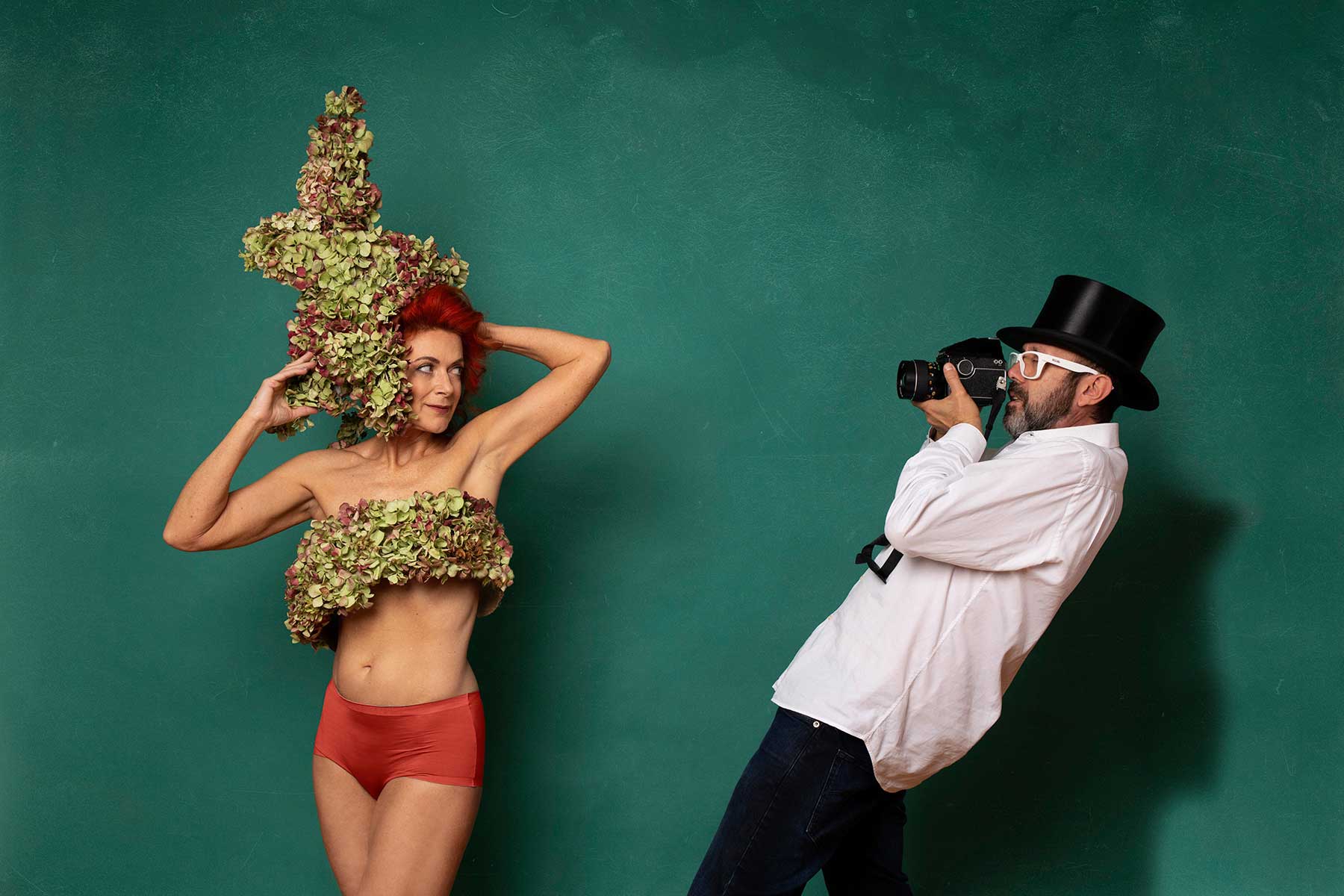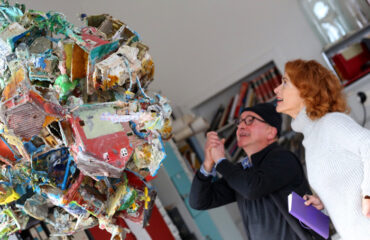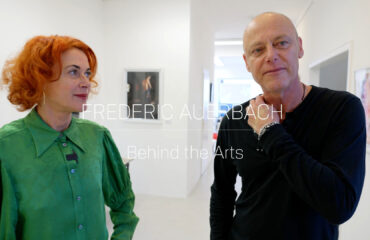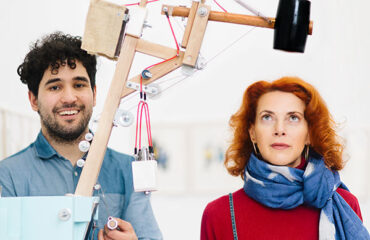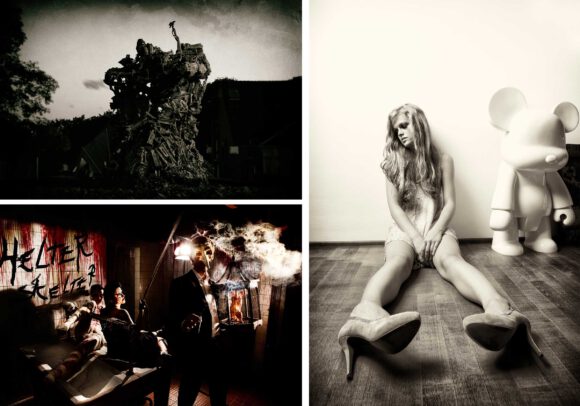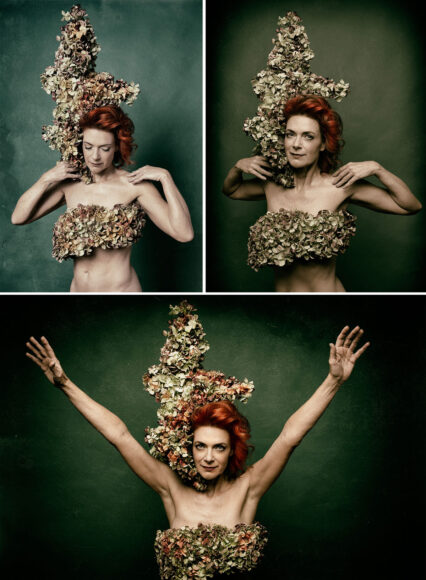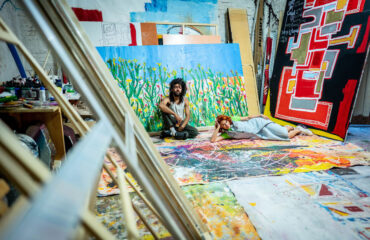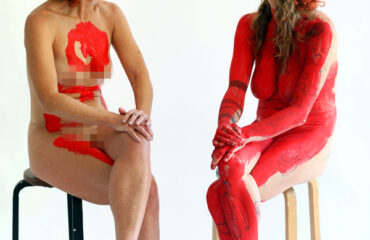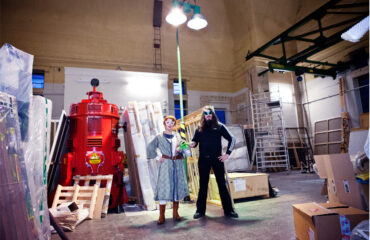Studio photos: Lucas Coersten
Prologue: Before starting in an unaccustomed and unusual way, a short explanation of the idea generating process: I met Fabio Borquez for the first time at the beginning of 2020. The reason was his impressive exhibition Flores del Mal at Schloss Benrath in Düsseldorf. On view were photos of nude women who formed almost symbiotic creatures in artistic productions with flowers. The opulent ambience of the castle created the perfect backdrop.
The poses of the women that were reminiscent of antique statues, their expressions and the colour spaces of the pictures which conjured images of the colourised film style of the German Expressionism, and last but not least the title Flores del Mal [“Flowers of Evil”] left a lasting impression.
A bouquet of hydrangeas that I had arranged on my dining room table in the autumn, reminded me of these pictures, as well as of Fabio’s invitation, to come and drop in for coffee at his live-in studio. Taking him up on this, he surprised me, at the visit, with the spontaneous idea of wanting to make a film of my studio visit at his place.
Questions doubting the achievement of this followed my intuitively given agreement. Normally, I visit artists as unprepared as possible in order to get an impression of their work. Everything develops spontaneously. With a film team behind us, which has to technically prepare every scene with camera and lighting, and a protagonist who is also the director, spontaneity is obviously not achievable…..A rough storyboard was accordingly unavoidable. Filming followed promptly. Immediately thereafter I realised that the cut to the film could not take place without my text. The story had to develop via the sequence of the filmed scenes. To a certain extent, a postscript to the studio visit to Fabio Borquez. I could not, however, do without the essay form so typical of my blog ,)
Script
[with personal comments]
Scene 1 Intro
While standing at the window of Fabio’s kitchen staring dreamily at the hydrangea bed, my thoughts take me back.
[The mental flashbacks are told through film sequences.]
Scene 2 Journey and Arrival
I am nervous when I travel to my first film shoot. Will it be possible to transpose my art blog, which, in essence, works via a combination of text and picture, into moving pictures? That is to say, to create an art documentation with entertainment value ? Definitely a challenge! Also, a challenge is the seemingly unimaginable diversity of Fabio Borquez’s portfolio. Would there be a common thread that connects everything? And would this common thread become obvious already during our first meeting? Questions upon questions are rushing through my head. But for now: Take a deep breath, concentrate and go …!
Scene 3 Welcome in the opulent entrance all of the art nouveau villa. We go to the kitchen, open-plan to the lounge. Fabio is preparing coffee. I look around.
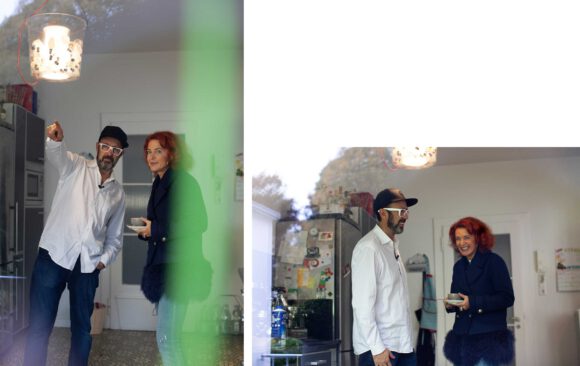
Initial small talk in the kitchen …
Elke: The equipment in the kitchen gives the impression that cooking is fun, right?
Fabio: Yes. Absolutely. For me, preparing food is a way to get rid of stress. I am not somebody who can simply sit and do nothing. I always have to be busy. Cooking helps me to sort myself out and allows new ideas to bubble up. While I am busy with it, ideas for pictures build up in my head in ever increasing succession.
Elke: It is very convenient then, that the distance to the studio is so short and all you have to do for their implementation is to charge up the stairs. And, looking around, a love of architecture and design – besides for cooking – becomes apparent.
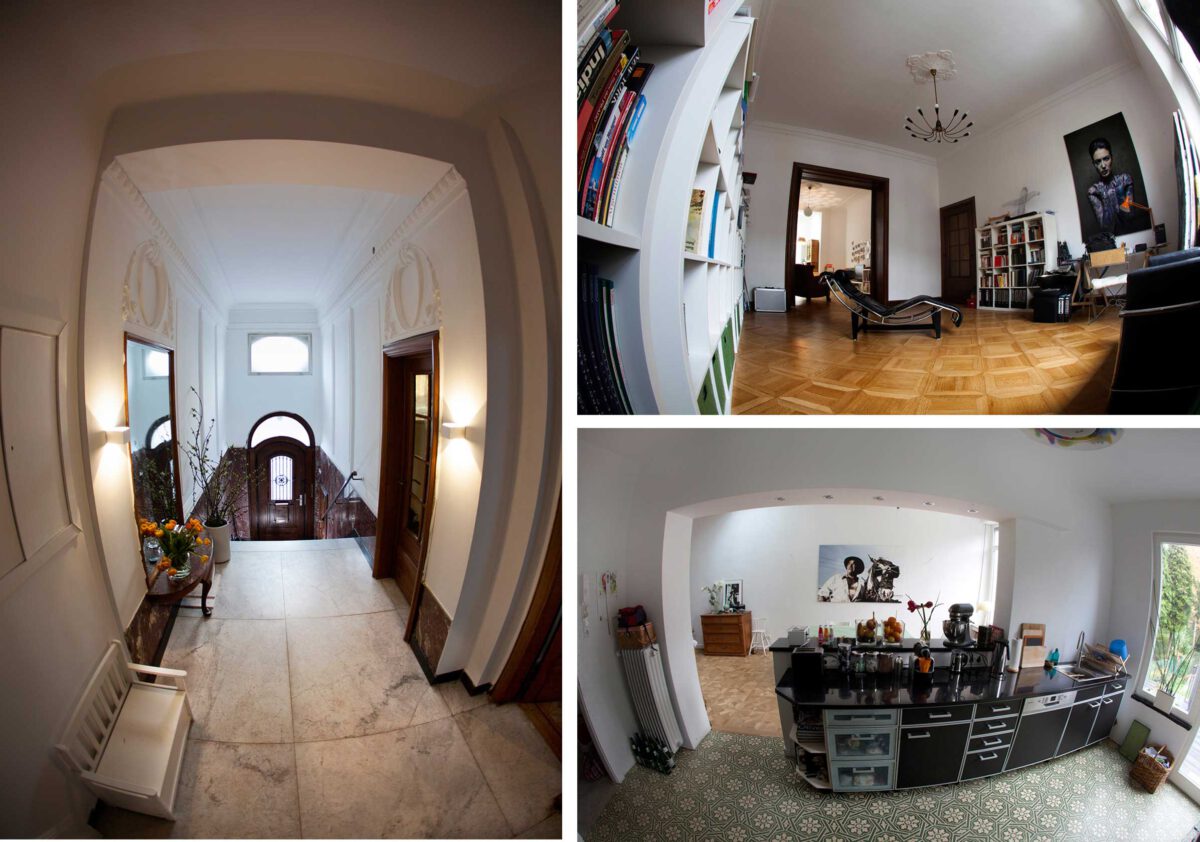
Impressions of the home of Fabio Borquez
Fabio: That is correct, I personally made the alterations to the house based on my own plans. My original profession is that of an architect. Photography came later.
Elke: What then drew you to photography?
Fabio: During my architectural studies I got bursaries for projects in various countries. I discovered that I wanted to travel and became curious about the world. Ultimately, it was the travel that led me to photography. My camera accompanied me everywhere, so many photos were taken.
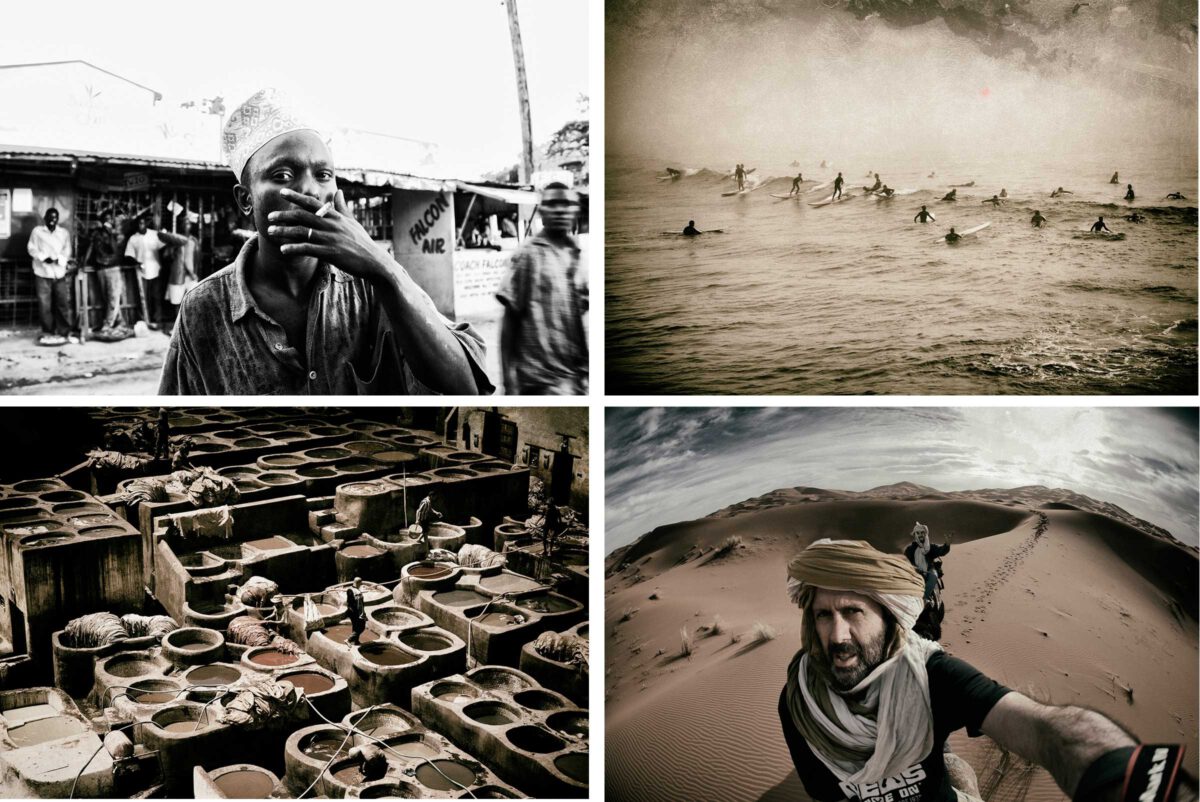
Examples of travel photographs; bottom right, a self-portrait of Fabio
Fabio: In order to finance more travel, at some point I got the idea to submit a few of my photos to publishers. Thanks to the income from these, I later went to India, where one of my photographs became very important. I used it to participate in a significant photo competition and won. I needed this official recognition to be able to believe in myself as a photographer.
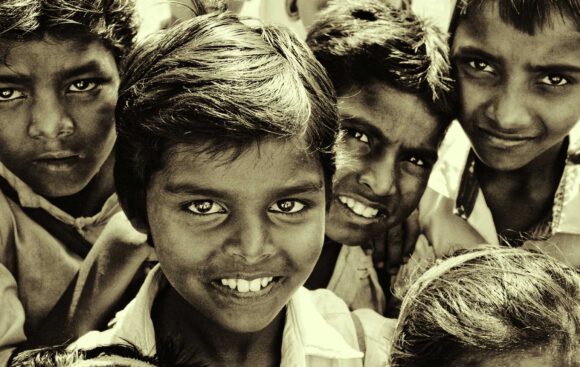
The winning photo
Elke: Was there a special direction your photography took, in the beginning? Did you concentrate more on architecture, people or rather moods which you tried to capture?
Fabio: Mainly people, which I think has something to do with my study of architecture. The theory of proportion had a strong influence on me and subconsciously always determined my picture compositions – theories like that of Modulor by Le Corbusier, which defines man as the measure of architecture. I very much enjoy a composition of man and architecture, because it enables me to express the proportions or to put the emphasis on monumentality of the building. Incidentally, I have an affinity for large rooms. I could, in fact, live in Versailles [laughs].
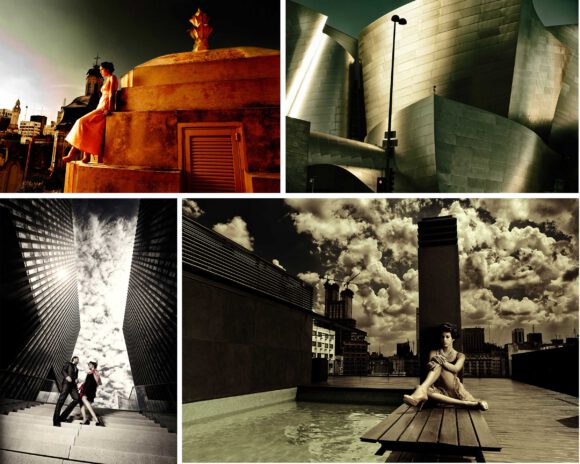
Examples of photographs with people and architecture
Elke: A certain partiality to opulence and grandiose decor can frequently be seen in your photographs. Privately, however, you obviously prefer a more uncluttered style. No sign of Versailles.
Fabio: No [smiles dismissively]. Privately, I am more of a minimalist. I need structure. That applies to my photography as much as to my life. I need this calmness as a frame in order to be able to follow my nature. I am Argentinian with Sicilian and Sevillian blood in my veins.
Elke: Oh, I see! You come from Buenos Aires. Besides your desire for travel, was there an intention to emigrate?
Fabio: No. I never imagined that I would be able to live so far away from my own country.
Elke: And how did you end up in Germany?
Fabio: Well, that is a special story. A photo shoot had taken me to Miami. While walking along the beach after work, I saw a girl. I started talking to her and kept asking her questions. After a few minutes she asked me, slightly irritated, why I was doing that. I replied: Because I think I am going to marry you. She just looked at me and asked whether I had taken drugs. Well, what must I say? She gave me a chance. And now I am here. Since 1998. Don’t forget: I am Latin-American. And quite charming.
[While Fabio is still speaking – and before I know what’s happening – I am asked to dance, with the camera still running, and completely lose my train of thought.]

Spontaneous request to dance
[While the subsequent change of scene helps with my reset, I tend to keep losing my thread because of quite a lot of interruptions. I kept being reminded of my favourite sketch from Loriot: “My name is Erwin Lottemann ….. I am five hundred thousand years old….” The call: “Camera rolling, sound recording” brings me back with a shock.]
Scene 4 Library: Considering picture content and aesthetics
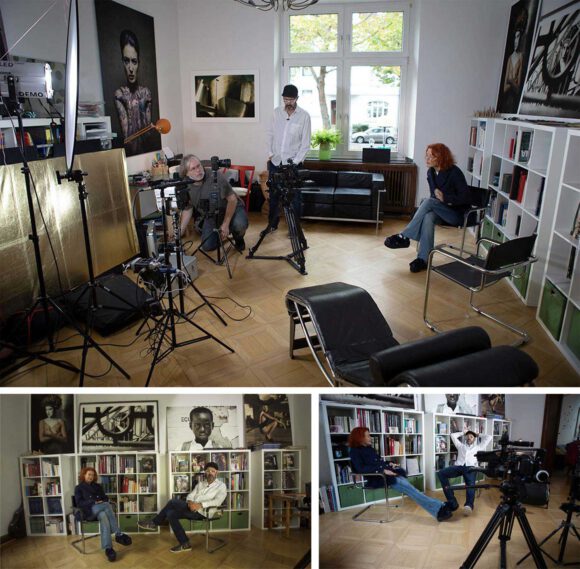
Behind the scenes … (Library scene)
Elke: Looking at your decor and furniture in their own setting, a preference for the period of the early twentieth century becomes apparent. The photographs directly behind me, to me also reflect an atmosphere typical of that period. Was it planned like this, or did the architectural frame allow this ambience to emerge by chance?
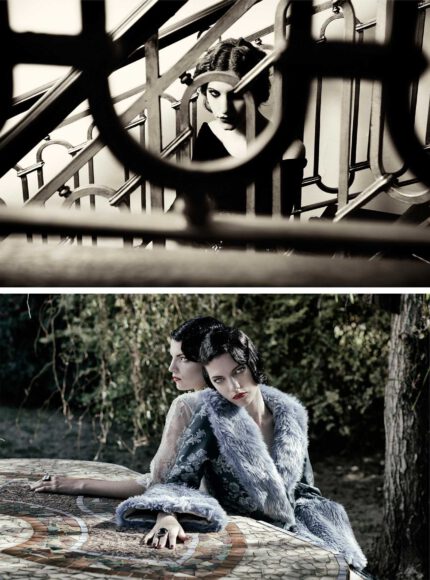
Photographs reflecting the aesthetics of the nineteen twenties
Fabio: It was planned like this. I love the classical period of the nineteen twenties and the German Expressionism and am also a great fan of cinema. For instance, the dramatic picture moods of Metropolis were a great inspiration for me. The same applies to the nineteen fifties films of the “film noir” genre and particularly the Italian films.
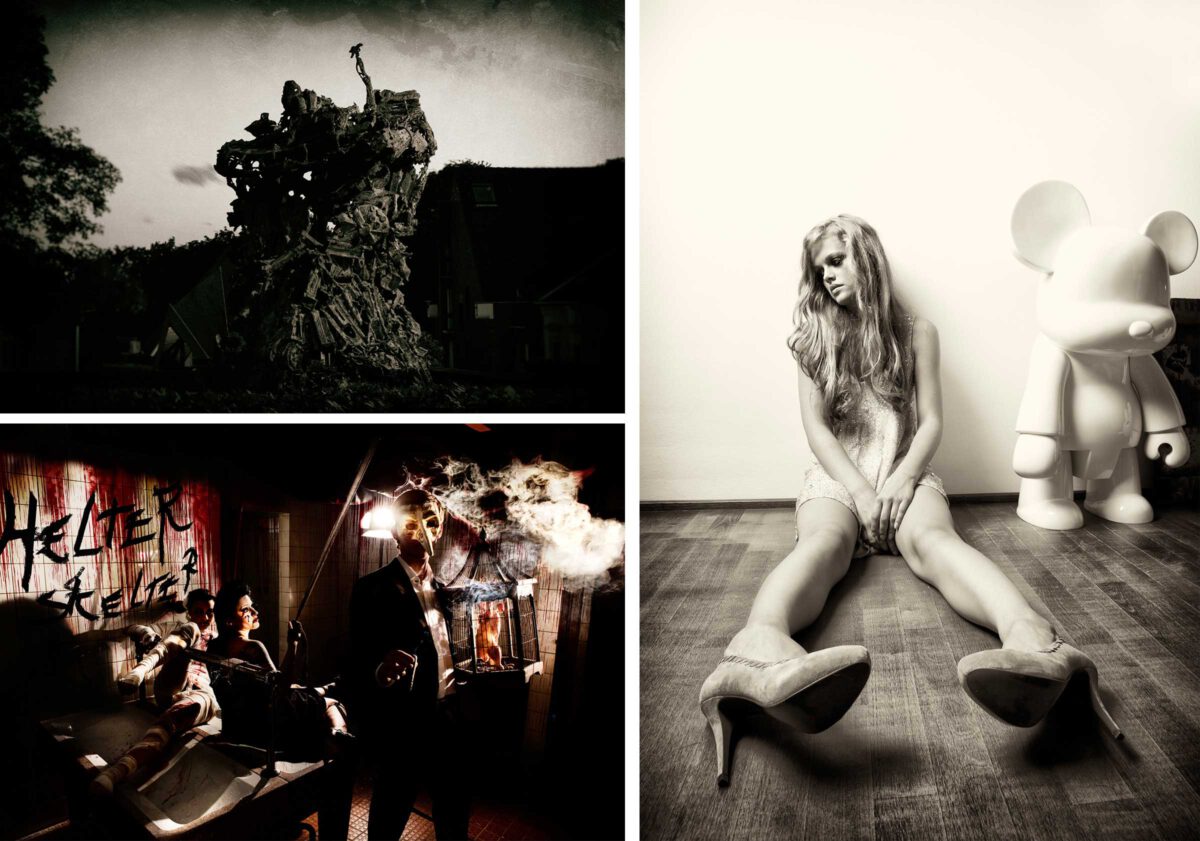
Filmstills?
Fabio: I simply adore Fellini! I met him for a coffee in Rome on the 5th May 1992 … [rhapsodizing, with eyes shining]
Elke: Wow! You even remember the exact date? Were you able to have the coffee without getting burnt or choking?
Fabio: There even is a photo [beaming with pride]. And it is the only one of me that shows me beaming from one ear to the other. I had only asked him if I could take a picture of him. I never do that. He asked me to take a seat and invited me for coffee. I will definitely never forget that day!
Elke: With the knowledge of your affinity for the film genre just talked about, I spontaneously remember some of your individual motifs of Flores del Mal, which reflect exactly this aesthetics. What exactly gave you the idea for this series?
[Im Ausstellungskatalog suche ich nach Beispielen, bevor wir dann den geplanten Szenenwechsel zum Zwischengeschoss antreten. Dort befindet sich ein Leuchtkasten mit „Flores del mal“-Motiv. Nach circa acht Wiederholungen des Treppenaufgangs („Falsches Objektiv“, „Zu wenig Licht“, „Zweite Kamera im Bild“…) beantwortet Fabio die Frage, die ich vor einer gefühlten halben Stunde gestellt habe.]
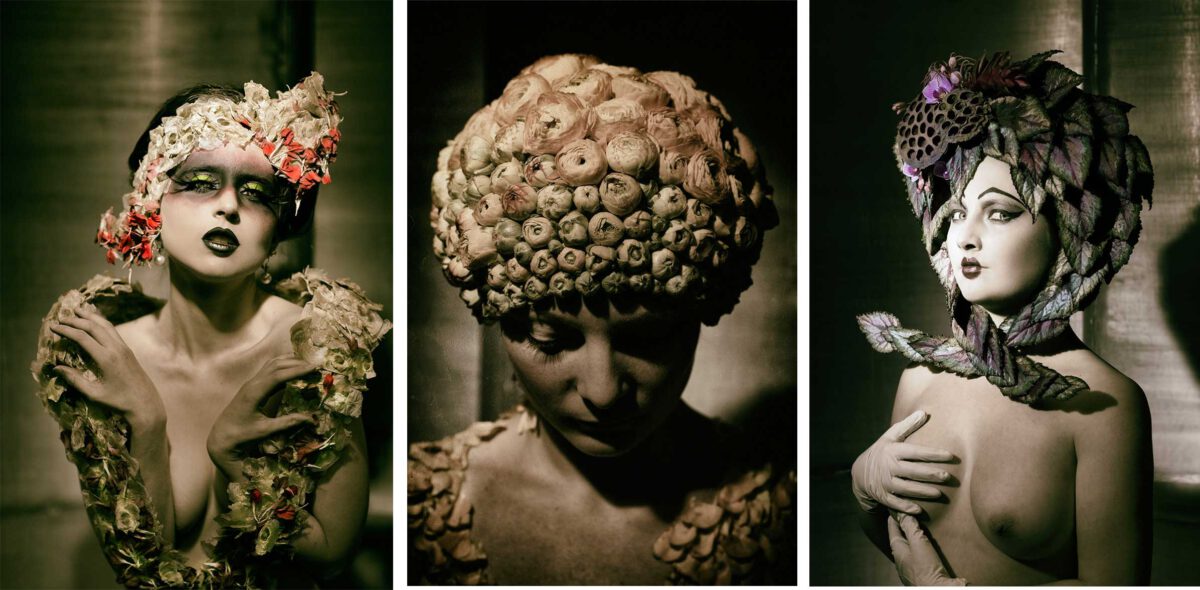
Sample photos from the “Flores del Mal“ series
Scene 5 Mezzanine floor: Questions regarding “Flores del mal“
Fabio: The idea emerged when I bought some cut flowers for my wife. Suddenly I became aware that these flowers, which represent vibrant beauty to us, are already dead. At that moment, I understood their symbolic meaning of transience, life and death. I wondered how I could transfigure to and photographically express this fragile, natural mortality of man. The narratives about man-nature-metamorphoses in mythology and the wonderful sculptures, like that of the Nymph Daphne by Lorenzo Bellini of the Renaissance era sprang to mind.
Elke: Is the reason for the models to pose in the nude also to be found in this?
Fabio: Absolutely. Any piece of textile would have destroyed the concept. I wanted to visualise the bond between flowers and body, goddesses-like, as a natural union.
Elke: Why, then, did you decide on the Flores del Mal title, which means “Flowers of Evil”?
Fabio: There is a book of poetry of the same name by Charles Baudelaire, which was originally published in 1857. At that time, the volume caused a literary scandal that resulted in the prohibition of the poems. Baudelaire, too, made use of the imagery of transfiguration. However, the manner of his transfiguration was denounced as vulgar realism. It is exactly this combination of realism and symbolism, the hint of the discreditable, and last but not least the poetic reference as such, which were the reasons to use this title for my photography series.
Elke: So, again, you followed your inclination for a dramatic staging. Hence the stark bright-dark contrasts, dark shadows and the generally mystical impression?
Fabio: Yes, exactly. That is part of the concept.
Elke [Voice-over]: Slowly, the central theme is beginning to emerge. Could one perhaps transfigure the term “Film noir” to photography in the sense of film stills? In that way, the style of the photos of Fabio Borquez could be put into words. He stages his figures often with a certain flippancy, in a dark mood, seeming imprisoned in urban city spaces or nature that appears surreal. All these are characteristics typical of “Film noir.”
[The arrival of Christine, Fabio’s longstanding make-up artist, interrupts my thoughts and determines the next change of scene. In order to experience him live at work and, at the same time, be able to create a special cover photo for my blog, the idea had emerged during the initial contact to stage me as a model for an additional motif of the “Flores des Mal” series. So, off we go. I shall transform myself into a human hydrangea plant.]
Scene 6 (Dining room: Styling of cover photo)

Styling and Shooting
Scene 7 Studio: Shooting.
[Posing half-naked in front of the whole team in the merciless light of the studio is not exactly the best precondition to look nonchalantly into the camera. For the first time I am therefore immensely relieved when, finally, I hear the eagerly awaited “cut”.]
Various results of the shooing
Epilogue
What a day! What a flood of material! Thinking about it at night, is seems to me quite impossible that a film could emerge out of this mayhem. But the rough cuts I have since seen have surprised me more than positively. Here is indeed a cinematographer at work, who tells his own story with moving pictures and thus also that of his photography. An independent-art documentation against the background of “Photography noir”. Truly an experiment. You may be excited!
Further Information
Website Fabio Borquez:
